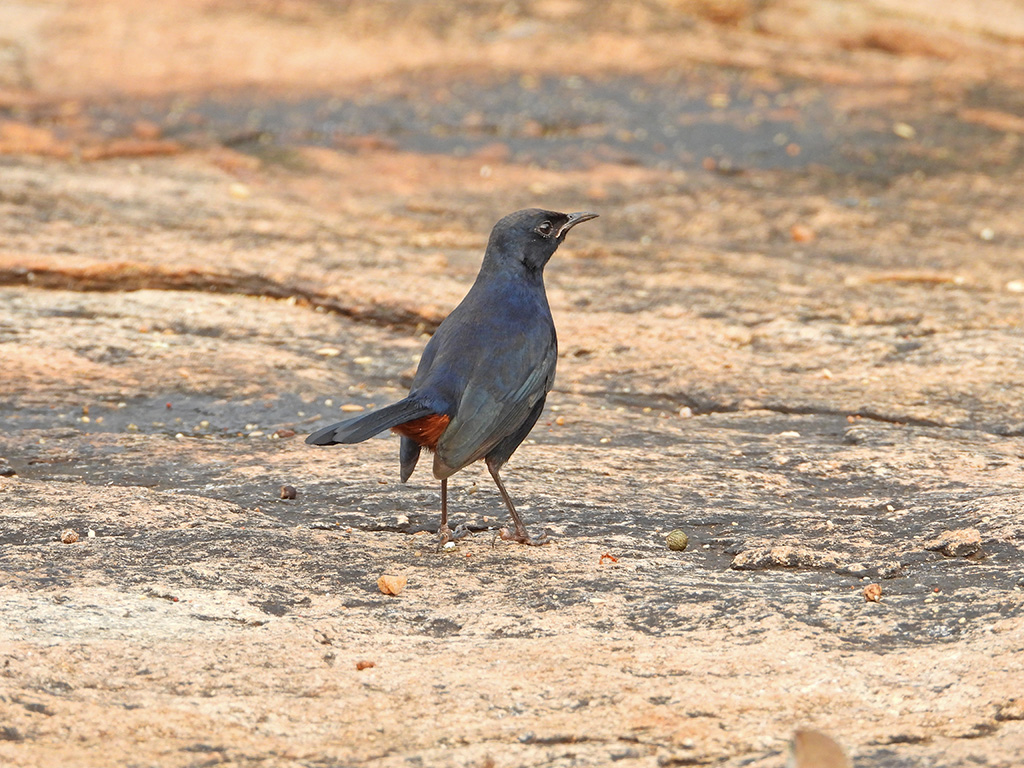| IUCN (International Union for Conservation of Nature): | Least Concern
|
|---|
| Approximate size(adult): | About 15–18 cm in length; weight ~15–20 g. Males are mostly black with a white shoulder patch and rufous under-tail, while females are brownish with paler underparts. Tail is long and often held upright.
|
|---|
| Resident/ Migrate from: | Resident species across India, Nepal, and parts of Pakistan and Sri Lanka. Non-migratory.
|
|---|
| Migrate to: | Non-migratory; may show local movements in response to food availability.
|
|---|
| Breeding season: | March to September, coinciding with pre-monsoon and monsoon months. Males display with tail-flicking, singing, and aerial displays to attract females.
|
|---|
| Breed in: | Nests in crevices, wall cavities, stone piles, and shrubs. Clutch size is typically 3–4 eggs, incubated by the female. Both parents feed the chicks.
|
|---|
| Habitat: | Found in open scrub, gardens, cultivated fields, rocky areas, and urban environments. Often perches on exposed posts or low vegetation.
|
|---|
| Diet: | Primarily insectivorous, feeding on beetles, grasshoppers, caterpillars, and other small insects. Occasionally takes small fruits and seeds. Hunts mostly on the ground or from low perches.
|
|---|











